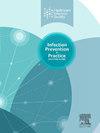Changes in entire acute bronchiolitis seasons before, during, and after the COVID-19 pandemic in Spain
IF 1.9
Q3 INFECTIOUS DISEASES
引用次数: 0
Abstract
Background
Paediatric acute bronchiolitis normally occurs from October to April in the temperate northern hemisphere, peaking in January. Nonpharmacological measures to control the spread of COVID-19 resulted in a decrease in the number of cases of bronchiolitis during the 2020–21 season. The discontinuation of these measures created an uncertain scenario.
Aim
To describe the epidemiological evolution of acute bronchiolitis seasons and the changes in the demographics of the affected population before, during, and after the implementation of nonpharmacological interventions for COVID-19 in Spain.
Methods
This was a multicentre and descriptive study. A total of 6,334 infants aged up to 12 months who were diagnosed with acute bronchiolitis were recruited from sixteen Spanish hospitals. We collected data from participants from September 1st, 2021, through August 31st, 2023, as part of the ECEALHBA research project. The study periods were before (P1), during (P2), and after (P3) the COVID-19 pandemic.
Findings
In P2 and after the discontinuation of nonpharmacological interventions, an unexpected increase in the number of acute bronchiolitis cases was observed from June–August 2021, resulting in an out-of-season peak. A subsequent peak was observed in November 2021, earlier than expected for the 2021-22 season. In the 2022-23 season, admissions followed a historical trend, with a greater number of cases than in the two previous seasons. Statistically significant differences in the length of stay (p<0.001), number of RSV infections (p=0.021), and number of paediatric intensive care unit admissions (p<0.001) were observed among the periods.
Conclusions
Two out-of-season peaks in the number of acute bronchiolitis cases were observed in 2020–2021 and 2021–2022. However, following the relaxation of nonpharmacological intervention measures, the peak observed in 2022–2023, although occurring 2–6 weeks earlier, was more similar to the peaks observed in the prepandemic seasons. Additionally, increased case severity was observed during these periods.
西班牙 COVID-19 大流行之前、期间和之后整个急性支气管炎季节的变化
背景小儿急性支气管炎通常发生在北半球温带地区的10月至次年4月,在1月达到高峰。为控制 COVID-19 的传播而采取的非药物措施导致 2020-21 年度支气管炎病例数减少。目的描述在西班牙对 COVID-19 实施非药物干预措施之前、期间和之后,急性支气管炎季节的流行病学演变和受影响人群的人口统计学变化。我们从西班牙 16 家医院共招募了 6334 名被诊断患有急性支气管炎的 12 个月以下婴儿。作为 ECEALHBA 研究项目的一部分,我们收集了 2021 年 9 月 1 日至 2023 年 8 月 31 日期间参与者的数据。研究期间分别为 COVID-19 大流行之前(P1)、期间(P2)和之后(P3)。研究结果在 P2 和停止非药物干预之后,2021 年 6 月至 8 月期间急性支气管炎病例数量意外增加,形成季节外高峰。随后在 2021 年 11 月又出现了一个高峰,早于 2021-22 年度的预期。在 2022-23 季度,入院病例数沿袭了历史趋势,多于前两个季度。不同时期的住院时间(p<0.001)、RSV 感染人数(p=0.021)和儿科重症监护室入院人数(p<0.001)均存在统计学差异。然而,在放宽非药物干预措施后,2022-2023 年观察到的高峰虽然提前了 2-6 周,但与流行前季节观察到的高峰更为相似。此外,在这些时期还观察到病例严重程度增加。
本文章由计算机程序翻译,如有差异,请以英文原文为准。
求助全文
约1分钟内获得全文
求助全文
来源期刊

Infection Prevention in Practice
Medicine-Public Health, Environmental and Occupational Health
CiteScore
4.80
自引率
0.00%
发文量
58
审稿时长
61 days
 求助内容:
求助内容: 应助结果提醒方式:
应助结果提醒方式:


